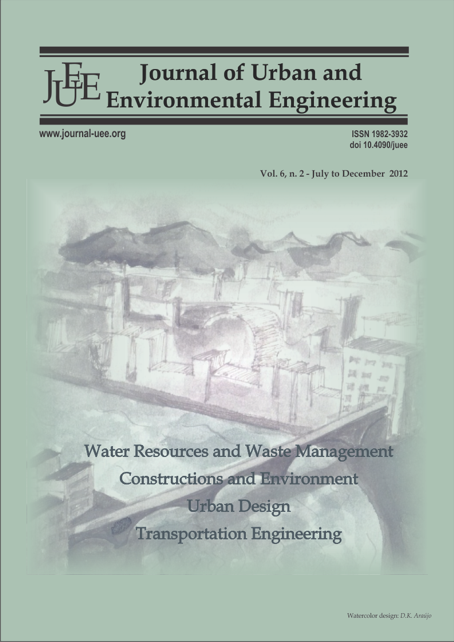PREDICTION OF RESERVOIR FLOW RATE OF DEZ DAM BY THE PROBABILITY MATRIX METHOD <a href="http://dx.doi.org/10.4090/juee.2012.v6n2.104108">(doi: 10.4090/juee.2012.v6n2.104108)</a>
DOI:
https://doi.org/10.4090/juee.2012.v6n2.%25pKeywords:
Dez reservoir, Drought Risk management, Water resources, Probability matrixAbstract
The data collected from the operation of existing storage reservoirs, could offer valuable information for the better allocation and management of fresh water rates for future use to mitigation droughts effect. In this paper the long-term Dez reservoir (IRAN) water rate prediction is presented using probability matrix method. Data is analyzed to find the probability matrix of water rates in Dez reservoir based on the previous history of annual water entrance during the past and present years(40 years). The algorithm developed covers both, the overflow and non-overflow conditions in the reservoir. Result of this study shows that in non-overflow conditions the most exigency case is equal to 75%. This means that, if the reservoir is empty (the stored water is less than 100 MCM) this year, it would be also empty by 75% next year. The stored water in the reservoir would be less than 300 MCM by 85% next year if the reservoir is empty this year. This percentage decreases to 70% next year if the water of reservoir is less than 300 MCM this year. The percentage also decreases to 5% next year if the reservoir is full this year. In overflow conditions the most exigency case is equal to 75% again. The reservoir volume would be less than 150 MCM by 90% next year, if it is empty this year. This percentage decreases to 70% if its water volume is less than 300 MCM and 55% if the water volume is less than 500 MCM this year. Result shows that too, if the probability matrix of water rates to a reservoir is multiplied by itself repeatedly; it converges to a constant probability matrix, which could be used to predict the long-term water rate of the reservoir. In other words, the probability matrix of series of water rates is changed to a steady probability matrix in the course of time, which could reflect the hydrological behavior of the watershed and could be easily used for the long-term prediction of water storage in the down stream reservoirs.Downloads
Download data is not yet available.
Downloads
Published
2012-12-26
Issue
Section
Articles




